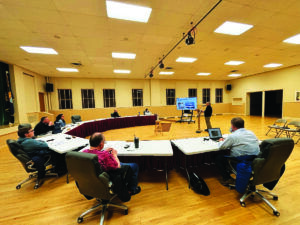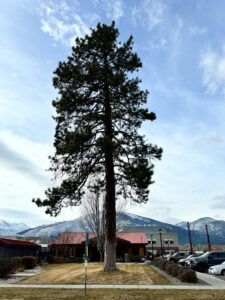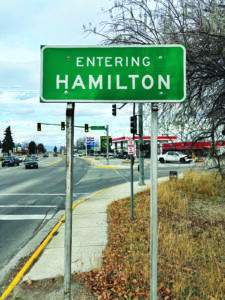
by Nathan Boddy
The Hamilton City Council heard an update on activities at the Rocky Mountain Laboratory during its regular meeting on Tuesday, November 19. Dr. Marshall Bloom, Associate Director of Science Management at the lab, told the councilors that he envisions regular annual updates to the city council in addition to bi-annual gatherings with the community liaison group that currently engage with laboratory representatives.
Bloom shared information about RML’s master plan, which was last done in 2015 and is due for an update.
“We need to evaluate our facilities and program and make sure that the master plan aligns with the current goals of our institution,” said Bloom. He explained that the process will involve compilation of data before a draft master plan and accompanying Environmental Impact Statement will be distributed for public comment. Based on comments received, a final Master Plan will be prepared. Bloom encouraged public participation in the process.

Bloom also gave the councilors an update on the lab’s ongoing noise control program, which he said are “voluntary self-imposed noise limits” which, “are as strict as any guidelines anywhere in Montana.” He also discussed the completion of Building 13, the new vivarium facility for the lab, and the construction process which will see Building J completed within the first half of 2027.
RML was also impacted by the windstorm of August 23, Bloom reminded the councilors, adding that the ponderosa pine which stands in front of the 4th Street visitor center suffered what he called “heaving.” The explanation that Bloom has received of the injury indicates massive disturbance and rupture of the root structure due to the strong winds. Such injury, Bloom explained, was certain to kill the tree, meaning that it would represent a safety risk. Based on expert advice, Bloom said that the 50-ton tree would be removed this winter.
“You wouldn’t want that falling across 4th Street,” he said.
In a bit of levity, Bloom concluded his presentation to the councilors by assuring them that at RML, “we don’t do any classified research there, we don’t work on aliens, and there is no secret bunker under Downing Mountain.”

Later in the meeting, the council also heard, and accepted, a zoning change request from B-1 to B for a 1/4 acre lot at 561 North Daly. The applicant’s stated purpose was for the construction of a single family home, which is not a use allowed by right in the B-1 zone.
The council also heard a request for annexation of the 2.08 acre lot which lies on the southeastern corner of the intersection of Highway 93 and Golf Course Road. The applicant, Josh Paffhausen, informed city staff that his intention was to bring city services of water and sewer to the lot in order that he may be able to obtain a development right on the land. The property has been vacant since the removal several years ago of a large white house which occupied the lot. Paffhausen sought a zoning designation of B-2, a commercial use zone, for the land.
While city staff and the Zoning Commission recommended approval of the annexation and zoning designation, several area residents did express disapproval of the change. According to the staff report, comments in opposition centered around fears of eventual forced annexation, and the potential scale of future commercial development on the lot. The city council, after consideration of the town’s annexation policy, comprehensive plan and the future land use map, accepted the annexation and zoning designation.

Hobo Hilton says
Unfortunate that a land grab is labeled as an annexation. Again, appearing special interest can interpret the rules they write.
Hobo